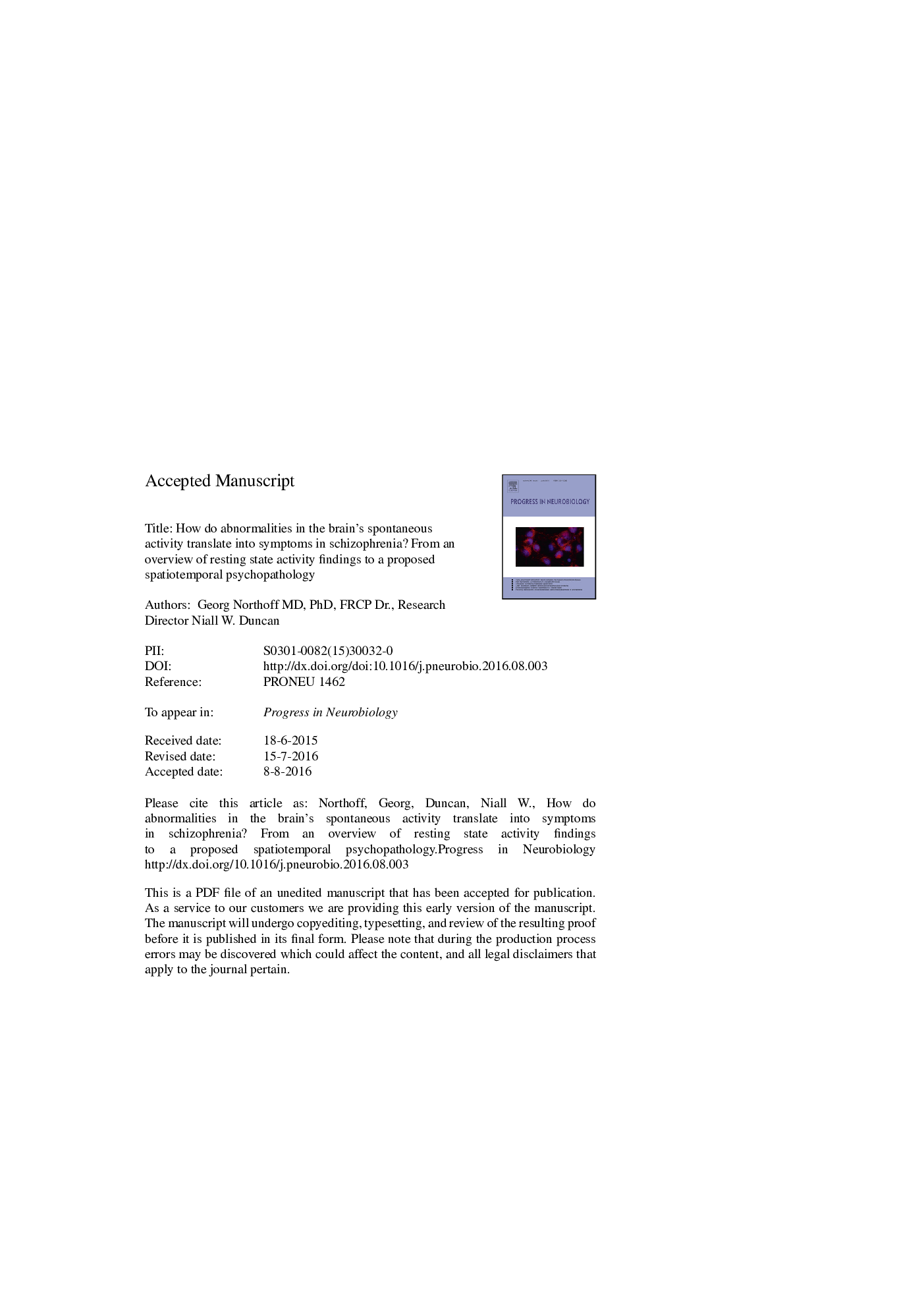| کد مقاله | کد نشریه | سال انتشار | مقاله انگلیسی | نسخه تمام متن |
|---|---|---|---|---|
| 5739133 | 1615368 | 2016 | 55 صفحه PDF | دانلود رایگان |
عنوان انگلیسی مقاله ISI
How do abnormalities in the brain's spontaneous activity translate into symptoms in schizophrenia? From an overview of resting state activity findings to a proposed spatiotemporal psychopathology
ترجمه فارسی عنوان
چگونه اختلالات در فعالیت خود به خود مغز به علائم در اسکیزوفرنی تبدیل می شود؟ از یک مرور کلی از یافته های فعالیت های دولت در حالت استراحت به یک روانپزشکی فضایی زمانه ای پیشنهاد شده است
دانلود مقاله + سفارش ترجمه
دانلود مقاله ISI انگلیسی
رایگان برای ایرانیان
کلمات کلیدی
جنون جوانی، حالت استراحت، فعالیت ذاتی، اتصال متقابل فرکانس، ساختار موقتی اتصال به عملکرد
موضوعات مرتبط
علوم زیستی و بیوفناوری
علم عصب شناسی
علوم اعصاب (عمومی)
چکیده انگلیسی
Schizophrenia is a complex neuropsychiatric disorder with a variety of symptoms that include sensorimotor, affective, cognitive, and social changes. The exact neuronal mechanisms underlying these symptoms remain unclear though. Neuroimaging has focused mainly on the brain's extrinsic activity, specifically task-evoked or stimulus-induced activity, as related to the sensorimotor, affective, cognitive, and social functions. Recently, the focus has shifted to the brain's spontaneous activity, otherwise known as its resting state activity. While various spatial and temporal abnormalities have been observed in spontaneous activity in schizophrenia, their meaning and significance for the different psychopathological symptoms in schizophrenia, are yet to be defined. The first aim in this paper is to provide an overview of recent findings concerning changes in the spatial (e.g., functional connectivity) and temporal (e.g., couplings between different frequency fluctuations) properties of spontaneous activity in schizophrenia. The second aim is to link these spatiotemporal changes to the various psychopathological symptoms of schizophrenia, with a specific focus on basic symptoms, formal thought disorder, and ego-disturbances. Based on the various findings described, we postulate that the spatiotemporal changes on the neuronal level of the brain's spontaneous activity transform into corresponding spatiotemporal changes on the psychological level which, in turn, leads to the different kinds of psychopathological symptoms. We consequently suggest a spatiotemporal rather than cognitive or sensory approach to the condition, amounting to what we describe as “Spatiotemporal Psychopathology”.
ناشر
Database: Elsevier - ScienceDirect (ساینس دایرکت)
Journal: Progress in Neurobiology - Volumes 145â146, OctoberâNovember 2016, Pages 26-45
Journal: Progress in Neurobiology - Volumes 145â146, OctoberâNovember 2016, Pages 26-45
نویسندگان
Georg Northoff, Niall W. Duncan,
